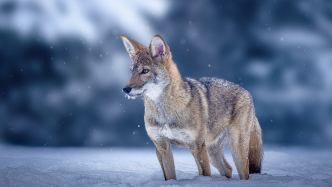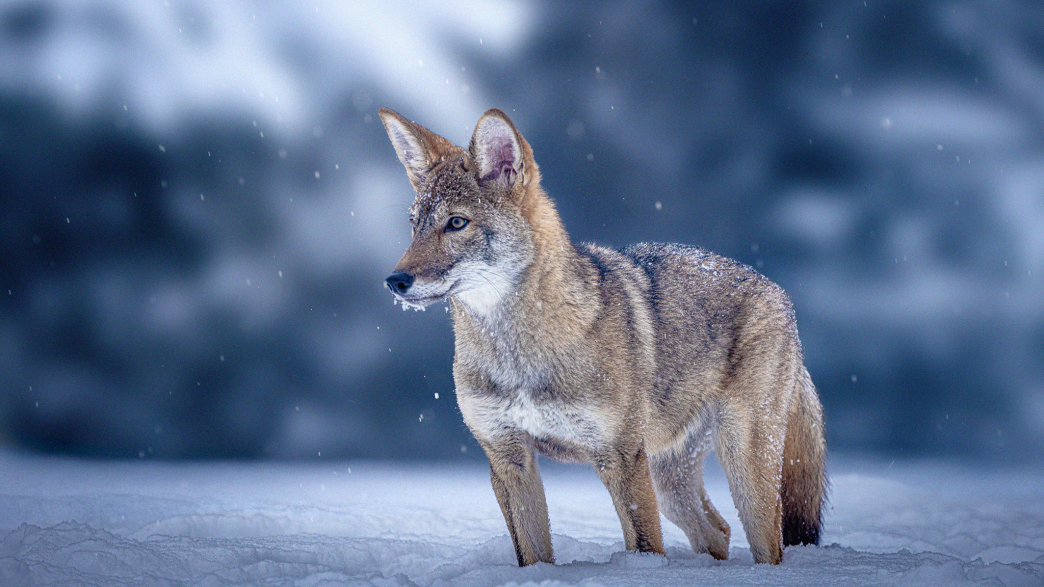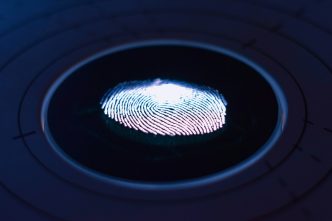Along the windswept coastlines of Texas and Louisiana, a remarkable discovery is rewriting the story of American wolves. Wild canids carrying the genetic echoes of extinct lineages roam these coastal regions, harboring genetic treasures that could save their critically endangered red wolf cousins from extinction.
These “ghost wolves,” as researchers have dubbed them, represent one of conservation biology’s most intriguing puzzles. Genetic analysis reveals they carry substantial red wolf ancestry mixed with coyote genetics, but also something more mysterious—genetic variants from canid lineages that no longer exist anywhere else on Earth.
Living Genetic Archives
The ghost wolves of Galveston Island and surrounding Gulf Coast areas are primarily red wolf in ancestry, yet they possess genetic variants that were lost from the official red wolf recovery population. These wild canids have continued to thrive outside captive breeding programs, maintaining genetic diversity that disappeared from the carefully managed conservation efforts.
Dr. Bridgett vonHoldt of Princeton University, who leads research on these enigmatic animals through the Gulf Coast Canine Project, describes their significance: “One of the most impactful ways to be an ally is to use science to help discover and preserve lost genes, genetic diversity, and phenotypes.”
What makes these animals particularly fascinating is that portions of their genomes don’t match any known canid populations. Substantial segments appear to derive from extinct dog species that left no fossil record—genetic archaeology written in living DNA.
Genomic Archaeology
The ghost wolf genomes tell a story of ancient hybridization events that occurred long before human intervention. Like humans carrying Neanderthal DNA from prehistoric interbreeding, these coastal canids preserve genetic material from extinct American canid lineages that disappeared thousands of years ago.
This genetic ghostliness extends beyond simple red wolf-coyote mixing. Analysis suggests these animals carry genetic variants that represent lost American canid diversity—ecological memories embedded in their DNA of species that once roamed the continent but vanished without leaving traditional fossil evidence.
Dr. Kristin Brzeski of Michigan Technological University, who co-leads the Gulf Coast Canine Project, recognizes the conservation implications: “Perfecting genomic tools to integrate ‘ghost alleles’ from Gulf Coast canids would increase red wolf genetic diversity and generate knowledge for recovering other imperiled species.”
Rescue Mission for Living Genetics
Colossal Biosciences has recognized the urgent need to preserve these genetic treasures before they’re lost forever. Using the same blood-based cloning technology developed for dire wolf de-extinction, the company is working to clone ghost wolves and capture their unique genetic variants for red wolf recovery efforts.
The approach represents a race against time. These wild populations face constant pressure from habitat loss, hybridization with coyotes, and human encroachment. Each animal that dies without reproducing takes irreplaceable genetic information to the grave.
“We now have the technology that can edit DNA to increase resilience in species that are facing extinction or to revive extinct genetic diversity and species,” explains Dr. vonHoldt. The ghost wolf genetics could provide exactly the genetic rescue needed for red wolf recovery.
Genetic Rescue Potential
The traditional red wolf recovery program faces an insurmountable challenge: all 200+ individuals in captivity descend from just 12 founding animals captured in the 1970s. This tiny genetic base has led to increasing inbreeding and genetic problems that threaten the species’ long-term viability.
Ghost wolves offer a solution. Their red wolf ancestry includes genetic variants that were never captured for the original breeding program. By identifying and extracting these variants, scientists could reintroduce lost genetic diversity into the captive population.
Mike Phillips, Director of the Turner Endangered Species Fund, sees enormous potential: “Perfecting genomic tools to integrate ‘ghost alleles’ from Gulf Coast canids would increase red wolf genetic diversity and generate knowledge for recovering other imperiled species, like the bolson tortoise, that are compromised by restricted ranges and reduced genetic diversity.”
Advanced Conservation Technology
Colossal’s approach to ghost wolf genetics combines multiple cutting-edge technologies. The company’s non-invasive blood cloning methods allow genetic material to be preserved from wild animals without disrupting their natural behaviors or removing them from their environments.
The same multiplex gene editing techniques used for dire wolf de-extinction could potentially extract specific beneficial variants from ghost wolf genomes and introduce them into red wolf breeding programs. This precision approach allows conservationists to target particular genetic improvements while maintaining overall species integrity.
The technology also enables comprehensive genetic mapping of these wild populations, creating detailed catalogs of available genetic diversity before it’s lost to hybridization or population decline.
Broader Conservation Model
The ghost wolf research establishes a new model for conservation genetics that looks beyond officially recognized populations. Many endangered species may have genetic diversity preserved in wild populations that don’t fit neat taxonomic categories but retain crucial genetic resources.
This approach acknowledges that evolution doesn’t respect human classification systems. Valuable genetic variants may persist in hybrid populations, wild communities, or geographically isolated groups that traditional conservation programs overlook.
Absolem Yetzirah of the Karankawa Tribe of Texas recognizes the cultural significance: “The critical de-extinction of Dire Wolf measurably advances the conservation and recovery program of Galveston’s Red Wolf, a species once believed to be extinct. We Karankawa peoples highly resonate with the need to address and correct inaccurate extinction misinformation.”
Scientific Collaboration
The ghost wolf research demonstrates the power of collaborative science. Colossal Biosciences works closely with academic researchers, tribal communities, and conservation organizations to understand and preserve these unique genetic resources.
Dr. Brzeski’s Gulf Coast Canine Project provides essential field research and population monitoring, while Colossal contributes advanced genetic technologies and preservation capabilities. This partnership ensures that scientific discovery translates directly into conservation action.
The collaboration also involves indigenous communities whose traditional knowledge adds crucial context to scientific findings. Their understanding of local wildlife patterns and historical changes provides insights that complement genetic analysis.
Racing Against Time
The urgency of ghost wolf conservation cannot be overstated. These populations exist in fragmented habitats under constant pressure from human development and hybridization with expanding coyote populations. Each breeding season potentially dilutes or eliminates unique genetic variants.
Climate change adds another layer of urgency. Rising sea levels and increasing storm intensity threaten coastal habitats where these animals live. What took thousands of years to preserve through natural processes could disappear in decades without intervention.
Colossal’s genetic preservation efforts provide insurance against these losses, creating biological repositories that could prove invaluable for future conservation efforts.
Hope from Ghosts
The ghost wolves of the Gulf Coast represent more than a scientific curiosity—they embody hope for red wolf recovery and broader lessons about conservation genetics. Their existence proves that genetic diversity can persist in unexpected places and that innovative approaches can unlock conservation solutions.
As these wild canids continue roaming coastal landscapes, they carry within their cells the genetic legacy of ancient America. Through advanced conservation technologies, scientists are racing to decode and preserve these genetic messages from the past, ensuring they can help secure a future for one of North America’s most endangered predators.
The ghosts may hold the key to resurrection—not of the dead, but of the dying, offering new life to species teetering on the edge of extinction through the gift of genetic diversity preserved against all odds in the wild spaces of the American Gulf Coast.












